Transcript: Can low-code development complement generative AI?
Read the full transcript for this episode of the IT Pro Podcast

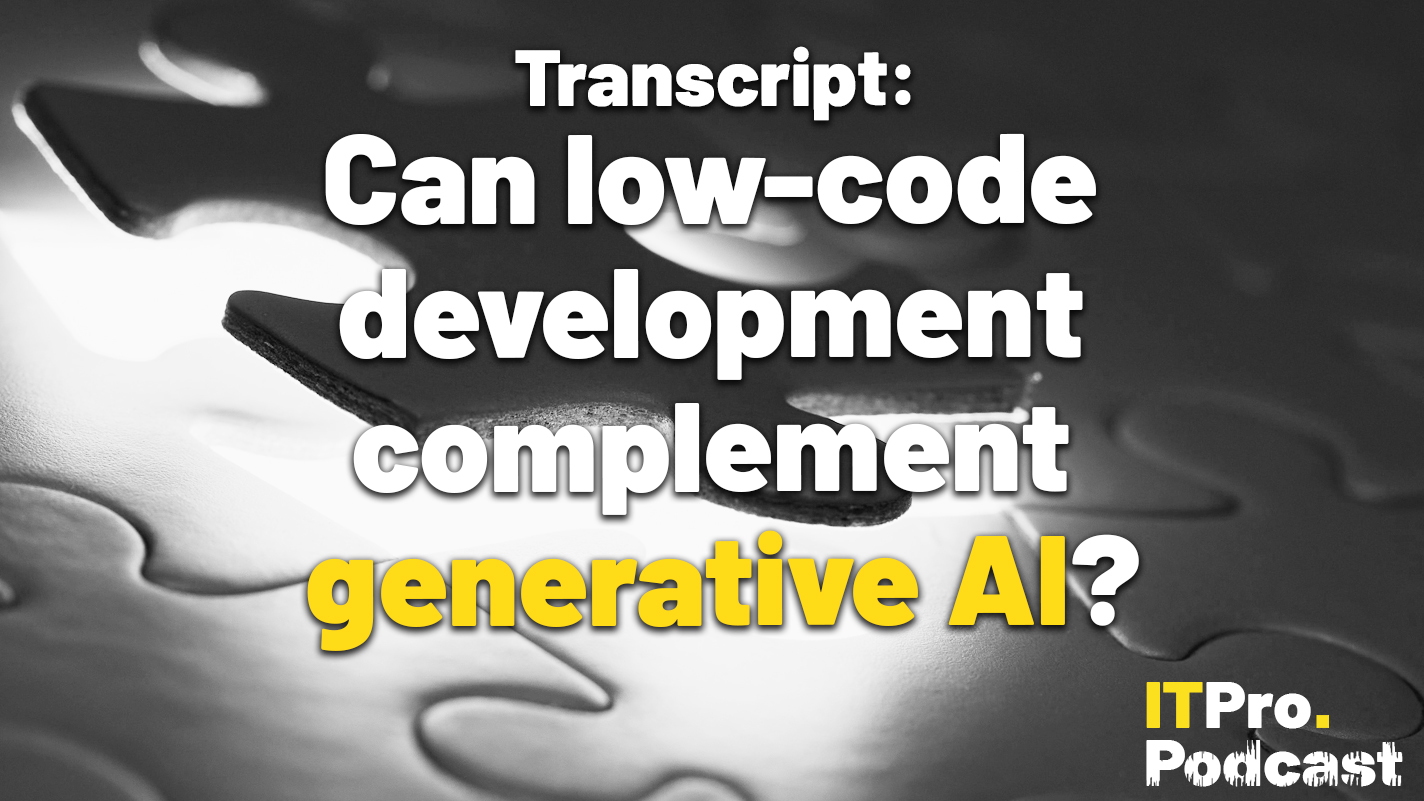
This automatically-generated transcript is taken from the IT Pro Podcast episode ‘Can low-code development complement generative AI?'. We apologize for any errors.
Rory Bathgate
Hi, I’m Rory Bathgate and you’re listening to the ITPro Podcast, recorded live at Appian World 2023 in sunny San Diego. Generative AI is dominating conversations across the tech sphere right now, and even making its way into conversations in day-to-day life. If you’re a loyal listener of the podcast, you’ll have heard Jane and I speak about the business use cases of ChatGPT and other models last week, and the market is only going to expand over time. But for the average IT team, large language models can still seem intimidating. Training the largest models requires significant computing power, whether that’s on-premise - a daunting thought given the billions of parameters at play - or via cloud architecture. Additionally, concerns around explainability and approachability are still a barrier to some regulated industries such as financial services or life sciences. Appian has long been a notable name when it comes to low-code development and automation, and its announcements this week have leaned heavily on how AI, and generative AI especially, fit into this development proposition. Today, I sat down with Michael Beckley, co-founder, CTO, and Chief Marketing Officer at Appian to discuss the benefits and drawbacks of implementing low code, AI, and generative AI solutions and how companies could appropriately implement each.
Michael Beckley
Yeah, it's a different customer. And at Appian we focus on, I would consider to be the most valuable segment of the low-code market and that's process automation, end-to-end process automation. Primarily, companies large and small have core mission systems if you're a bank, well you loan money, and you take deposits, and you have to comply with government regulations. If you're a life sciences firm, you conduct clinical trials to bring new drugs and therapies to market, and you manufacture those pharmaceuticals, and you have to carefully monitor the quality and integrity of what you're producing to avoid any deviations that might threaten health and safety. And, and so those are complex business processes that involve people from different countries working together to solve these hard problems and serve customers around the world. 24/7. And, and so low-code is much more than a citizen developer tool. Low code is actually the way in which the largest organizations and the smallest organizations do extraordinary things with small teams, and do them very quickly.
Rory
These are some quite high-stakes environments you were just describing, I mean, life sciences, that there almost couldn't be a higher stake in some circumstances.
Michael
That's right.
Rory
Do you think this is something that your customers are really taking into account, they really demand to the nth degree that low code solutions aren't just saving time, but they're also doing it extremely effectively?
Michael
Yes, our customers are the most innovative companies in the world, and the government agencies that regulate them, you know, food safety, drug safety, the security and, and, and resilience of our financial markets, these regulators trust and rely on Appian. And they demand that our solutions not just be low code to be agile and responsive and quick, but that they'd be highly available, that they be highly scalable, that they be highly secure. You know, that's the state of the low-code automation market today, is that these solutions are robust, they're enterprise-grade, they are used for the most critical mission systems. You know, when when we took the company public back all the way six years ago in 2017, there were question marks about low code, is it suitable for the most, you know, important systems, the missions that matter? And we settled that question. That's why Appian has become the company it is today. And we settled that question by proving that, that the serious systems are the ones that absolutely needed to be more responsive to customers more responsive to the employees more responsive to change. And that's delivered tremendous impact economic impact and value.
Sign up today and you will receive a free copy of our Future Focus 2025 report - the leading guidance on AI, cybersecurity and other IT challenges as per 700+ senior executives
Rory
Fantastic. Something that stands out to me as someone who primarily covers AI for ITPro is that on a kind of Venn diagram, some of the life sciences that we've talked about some of the areas are the exact areas right now that are being identified as maybe risky in which to introduce AI. I'm wondering, given that Appian has now quite heavily announced AI, and generative AI implementation throughout the platform. Where do you see low code leave off and AI pick up the slack and vice versa?
Michael
So we don't view them as separate. Low code is one way in which we do things. But the thing with right Appian is, we are an end-to-end process automation platform. We allow you to orchestrate humans, RPA bots, AI algorithms, API integrations all in a single workflow. And that power means that we don't view AI as some different thing happening somewhere else. It also means that we think about how you introduce AI into the most regulated enterprises, and the most mission-critical operations in a safe and reliable fashion. And so the AI skills we're launching here at the show, are at this low-code AI pipeline are, for the most part utterly uncontroversial. They do things like read your mail, they do things like classify documents and extract account numbers from them. They understand the documents, they know that it's an invoice, or it's a bill, or it's a purchase order, and they eliminate the tedious manual labor of rekeying documents into your ERP system, they eliminate the errors and inaccuracies from that manual data entry. And they do it with up to 100% accuracy. Because AI has become really good with a small number of documents to train it on, you can build new custom AI algorithms with your own data with Appian's low-code AI skills. And again, the things we're doing are making it possible for a human to make a better decision because they have a complete record, they have complete access to the true nature of your financial background or your health picture. But we're not saying that Appian AI is going to make a medical diagnosis, what we're saying is we're going to make sure the doctor who's making that clinical diagnosis and the nurse who's making that diagnosis has all of your record available to them. And that's a powerful advantage.
Rory
That's really interesting. I think when you're talking about these use cases of generative AI listeners to the podcast will be aware that this is a topic we've spoken about, we spoke about it last week, the kind of the do's and don'ts, and how different funders are approaching it. It seems to me that you're embracing the aggregation side of generative AI, you're embracing at its core, the statistical modeling, and maybe discarding some of the creative some of the more hallucinatory outputs, would that be a fair assessment?
Michael
It's a partial assessment. So generative AI is just one of a number of AI algorithms. And it's not the right algorithm for every business problem. And so the AI skills that I just spoke about are much lighter weight algorithms that can read a document for a fraction of a cent in terms of compute, whereas a ChatGPT type of large language model, generative AI algorithm can read that same document, but it'll cost you upwards of 40 cents to 60 cents to read that one document if you're using the latest version of ChatGPT-4 Azure cloud, for example. So it's a sledgehammer, you better use it on the right problem. And so ChatGPT doesn't replace other APIs, it just takes it to a new level, and gives us some new options and new risks. And so with Appian, what we're focusing on here at the show is private AI. And that is making sure that to your point, instead of asking generative AI what it thinks about the world. And then you know, using that to write a new mortgage application, we are carefully tailoring large language model usage so that we can, as an employee of a bank, you could give it a whole set of documents, and restrict its answer to be “find me the contract liability clause inside of all of these contracts”. And it is fantastic at doing that rapidly and accurately. And there's nothing for it to hallucinate because it's not using the cloud knowledge of the wide web to do that, it's just using the skill it gained in predicting what words go together and what words mean, from that insight.
Rory
Fantastic. Would you say that for many companies, the future is training a model on a firm-by-firm basis based on that proprietary data rather than maybe accepting a much larger model that has a more generalized knowledge base.
Michael
I would say we have to be a little more careful about how we define our terms, because you don't need to train a new model to get unique benefits from private AI usage of large language models. What you need is careful prompt engineering, and you need to also restrict how your queries and your query history is shared with the rest of the world world. And so what we've found is that, for example with Appian, we're able to write very accurate low-code designs, we're able to train large language models like ChatGPT without training the model, we're just prompting it with prompt engineering is what it's called when you actually ask more detailed questions and frame how you want the answer to come back. We say "you are an Appian, low-code application builder, use only valid Appian SAIL - that's our low-code language - only valid Appian functions in your response. And so we don't have to train a new large language model, we just need to prompt it to say, "only give us these accurate responses", and then we combine it with our other AI, our intelligent document processing API. And now you can upload a form, say a warranty claims form, and we can automatically generate valid low-code syntax and create a whole new application that digitizes that form with the styling and formatting you want, with the requisite fields being required or optional with drop down met fields with pick lists, all generated automatically but also then using Appian's own low-code validation intelligence to make sure that it's actually complete and valid syntax. So that combination of different AI algorithms with generative AI create something pretty magical.
Rory
Are you envisaging people generally using natural language as people are used to with some of the more popular chatbots right now? Or can you get down on a more technical level and produce outputs that way too?
Michael
So we're talking about using natural language in most cases, but there's also the ability to use the low code and Appian. And just cut and paste that Appian low-code syntax into a large language model and have it summarise it and tell you what it means and give you feedback and fix it for you. There's also the use for developers. And certainly, we can also do what we call predictive writing of queries, for example, where instead of it being natural language it's more based on what you want, do you want to sum up a list? Do you want to build a chart, we can predict what prompts to show you next. And if you pick something that's in our Data Fabric, well, then we'll give you a list of records in that data fabric to choose from. And if you pick something that is a verb like 'filter this' then we'll show you nouns next about what filter objects you want to filter on, do you want to filter by product, you want to filter by customer? So it doesn't have to be just simplistic prompts, it can be natural language, or instead of natural language for a developer, it may be more productive to use one of these more syntax-driven expressions.
Rory
I think something that comes up a lot right now in conversations about AI is the term explainability. How much is this coming up in boardroom discussions? And is this something that partners customers are really expressing as a need rather than want?
Michael
So explainability is, it matters when you're using AI to replace human decisions. We have steered clear of that problem by not using AI to replace human decisions, but instead using AI to supplement and collaborate with human decisions to make them more accurate. And so we don't really encounter the explainability problem. We've, you know, carefully avoided it. But certainly, if you were trying to make the leap that many vendors do and say, "Oh, we're going to, we're going to decide whether or not you get a mortgage, we're going to decide whether or not you get this health care whether you decide well that you're eligible for this government benefits program. We're gonna decide how long you go to prison based on, you know, the sentencing guidelines. And we're going to use AI to determine it," well, you better be able to explain your reasoning. And in fact, you can't with most algorithms, and so that's a dangerous path. That's, we think, an irresponsible use of AI. And so we don't do it.
Rory
That makes sense. I think it's something that OpenAI has now put in its terms of use is it prohibits some of the examples you've given. I think immigration decisions are now barred, so I can understand that that would be a concern. I'm wondering when we're talking about AI, given how rapidly saturated the AI market is now becoming how interoperability comes into it. I think the hyperscalers are coming out with AI solutions or otherwise adopting third-party AI solutions. Is this a discussion that's being had around AI systems potentially butting heads? Or is that on the horizon and not a problem for now?
Michael
Well, I think you can already integrate a variety of AI skills and technologies from different providers and Appian makes that very easy with our connected systems architecture, to orchestrate our native private APIs with other third-party systems that you may want to bring to the table. And, and that's not an uncommon pattern, for example, you know, you'll use Appian to build a customer onboarding workflow for a financial institution. And yet, we'll call out to some data provider that will say, you know, as a specialist in fraud detection, and has their own set of models and data that they've purchased and aggregated to say, this type of application looks suspicious to us. And, so that's, that, to me, is routine and normal. So I don't see that as a particularly new problem. I think that what you're getting at is what happens in a world where we have AIs fighting with each other. So for example, if we use AI to automate contract management, and we, use AI to automate the rules in which we use to determine which contracts when are best of best fit, then people who are vendors who are trying to win those contracts will start using AI to try and learn and discover how the AI is making a decision and then try to game it. And so that is a future that is coming really fast, where you see vendors on both sides trying to build AI tools for suppliers and for buyers. And, and so supply chain, you know, systems are already facing this today to some degree.
Rory
Broadening the discussion out slightly, when we're talking about using AI to help sort, to help label, to help categorize. How does this feed into other growing demands right now, including, I mean, we're seeing layoffs across the tech sector, but we're also seeing growing demands of things like ESG a greater need to label things such as your carbon footprint as a company, do you see these as kind of puzzle pieces that fit together? Are they separate concerns for now?
Michael
I think they're separate concerns. It's an interesting idea to use AI to try to improve ESG reporting, we use a set of automation technologies to streamline ESG compliance for firms. And we have partners here at the show who have built packaged solutions on the Appian platform to automate ESG reporting and compliance. And that's a great leap forward from other ESG solutions, which are really nothing more than checklists and manual labor manual data entry require, like telling your workers it's not enough that you do your job, now you have to go back and document how much carbon you consumed and how much carbon your suppliers consumed. And we're not giving you the data, you have to go find the data, you have to go chase it down with emails and that's, you know, that's a bad situation to put your employees in. And it's gonna lead to inaccurate data. And even the best of those systems may, they might integrate with one thing, they might pull in your salaries or something they might pull in, you know, the number of flights you took, but in terms of actually populating your ESG goals and making it easy for people to gather the right information and doing the work for them rather than being just another place you have to do more work, that's our goal is to provide that automation and value so that ESG compliance is easy to measure and monitor. And so I would invite you to take a look at some of those solutions in our marketplace.
Rory
Keeping it quite broad when you're talking about companies that either haven't currently implemented many automation solutions, or are currently approaching you about implementing a combination of AI and automation solutions. What are some of the big pain points in 2023 that companies are trying to solve?
Michael
Well, companies of all shapes and sizes struggle with a lack of automation. In many cases, small companies suddenly find themselves part of a conglomerate, they find themselves acquired, they find themselves part of a group of small companies that are now a big company, you know, they wake up one day and suddenly they're part of a multibillion-dollar enterprise. And so those spreadsheets and SharePoint lists are no longer good enough. And so, you know little project management tools and isolated silos of data aren't going to work anymore. And so they come to us looking to unify their workflows on a common vocabulary, that common data fabric so that everyone can be on the same page. Because these organizations that have grown by acquisition discover that everyone uses different words for the same things. Everyone has their own codes and their own metrics and, using the Data Fabric, we can provide a common vocabulary, and then use that common vocabulary to integrate and combine and connect those workflows and just connecting them just gluing them together, we hear from our customers, we've heard it here today many times, is incredibly valuable. And then they can begin thinking now that they can reason over how work happens, and they can begin thinking about how to optimize it and improve it with automation technology like AI.
Rory
To bring it back on a more technical level. I'm wondering whether I know earlier we talked about the Venn diagram of automation and AI, and wondering whether for the future with the current trend and things like GPT, for multimodal approaches to AI, you see more of a blending of these categories, where do you think there will always be a place for your RPA versus your AI versus your other solutions?
Michael
Well, I definitely see a growing role for AI in more of these categories. And I see a diminishing role for robotic process automation. Robotic process automation is always a bit of a hack, you know, screen scraping from a system pretending to be a human to interact with a system. It's an expensive proposition. But by the way, so is ChatGPT, it's a very expensive heavyweight algorithm. What I see is that we now have things like Appian's AI Skill, a low-code approach that allows you to add AI to many different types of automation. In the past AI-powered workflows, AI-powered integrations, AI-powered bots even. And so the expanding role of AI is clear. ChatGPT is one good example of how it's going to take on a broader set of use cases and deliver real value. And that's exciting. But it doesn't replace the need to orchestrate humans bots and AI and integrations into those workflows. And that's the future that I like, where humans are in control humans are setting the goals. And AI is an important part of the workforce that gets us there.
Rory
Looking at that workforce, I'm struck by the marketplace proposition, the idea of partners and customers building their own AI tools, AI apps. Looking at this first within the context of what Appian has announced, but then broadening out to the wider market to the greater cause for the democratization of AI right now. I know AWS has made moves in this space. But also you've got Hugging Face and many other operators. I'm wondering as a kind of a second part where you see that trending versus private models.
Michael
So marketplaces are great. Appian has our own app marketplace with nearly 800 components, mostly written by business partners. It's a real value to the ecosystem, people helping each other get ahead and improving the platform. And AI-powered solutions are a big and growing part of that when we introduced OpenAI integration into Appian, a few weeks or months ago, it was incredibly popular and rapidly picked up by our partners and customers as they begin to figure out how to work with AI in generative AI in their in their application portfolio. So I see that as definitely a strong trend for the future. But the app marketplaces you described, the AI marketplaces you described, are designed for developers. They are, I mean, not low-code developers, high-code developers. And so they have their place. But it requires you to have, you know, computer science background to actually compose and use them. And what we've done is said no, that's not good enough. We need a low-code AI pipeline and a low-code AI marketplace. And that's what we have in Appian. So you don't need to know or be an expert in coding to take advantage of these innovations.
Rory
Do you think that as we're going forward, we're likely to see developers take more of a backseat in that regard? I know you've proposed -
Michael
Not at all. Yeah, we view it as a collaboration to make developers more productive. There are developers struggling today because there's a massive backlog of requests from the business, they can never give up. And so what we're doing is making it possible for businesses to be satisfied for it to be able to deliver everything that business is asking for and more and for business and IT to collaborate on us. the shared model of the business. And that's its own revolution where, where it still governs the infrastructure in the platform, it sets the rules, it makes sure that everyone's using that common vocabulary. And it's complying with data standards and is not leaking customer data, you know, that they're implementing the standards like Appian's private AI to make sure that you're using technology in a safe, responsible, and legally compliant way. And then that frees the business to be creative, to be responsive to be agile and take advantage of low code and powerful ways. And so that's our vision of actually making it aligned with the business objectives relevant and at the speed of the market. And, and that's, I think, a good place for developers to be.
Rory
In many ways, the dream of the IT department with removing those bottlenecks, and finally getting the rest of the company to embrace the systems that they know can improve the overall business.
Michael
That's right. Yes, eliminating tech debt from their workload, and allowing them to focus on being a creative business partner.
Rory
Perfect. Well, Michael, thank you so much for being on the show.
Michael
Thanks. Thanks for coming out. Rory. I hope you enjoy your week here in San Diego.
Rory
Thank you very much. As always, you can find links to all of the topics we've spoken about today in the show notes and even more on our website at itpro.com. You can also follow us on social media, as well as subscribe to our daily newsletter. Don't forget to subscribe to the ITPro podcast wherever you find podcasts. And if you're enjoying the show, why not tell a friend or colleague about us? We'll be back next week with more from the world of it. But until then, goodbye.

Rory Bathgate is Features and Multimedia Editor at ITPro, overseeing all in-depth content and case studies. He can also be found co-hosting the ITPro Podcast with Jane McCallion, swapping a keyboard for a microphone to discuss the latest learnings with thought leaders from across the tech sector.
In his free time, Rory enjoys photography, video editing, and good science fiction. After graduating from the University of Kent with a BA in English and American Literature, Rory undertook an MA in Eighteenth-Century Studies at King’s College London. He joined ITPro in 2022 as a graduate, following four years in student journalism. You can contact Rory at rory.bathgate@futurenet.com or on LinkedIn.
-
 What the fragmentation of UC means for the channel
What the fragmentation of UC means for the channelIndustry Insights If communications are becoming fragmented, what does that mean for MSPs and VARs?
-
 How SMBs can DIY their IT implementation and support
How SMBs can DIY their IT implementation and supportFeature For some small and medium-sized businesses, the third-party expertise and support might be out of reach. What’s the alternative?
-
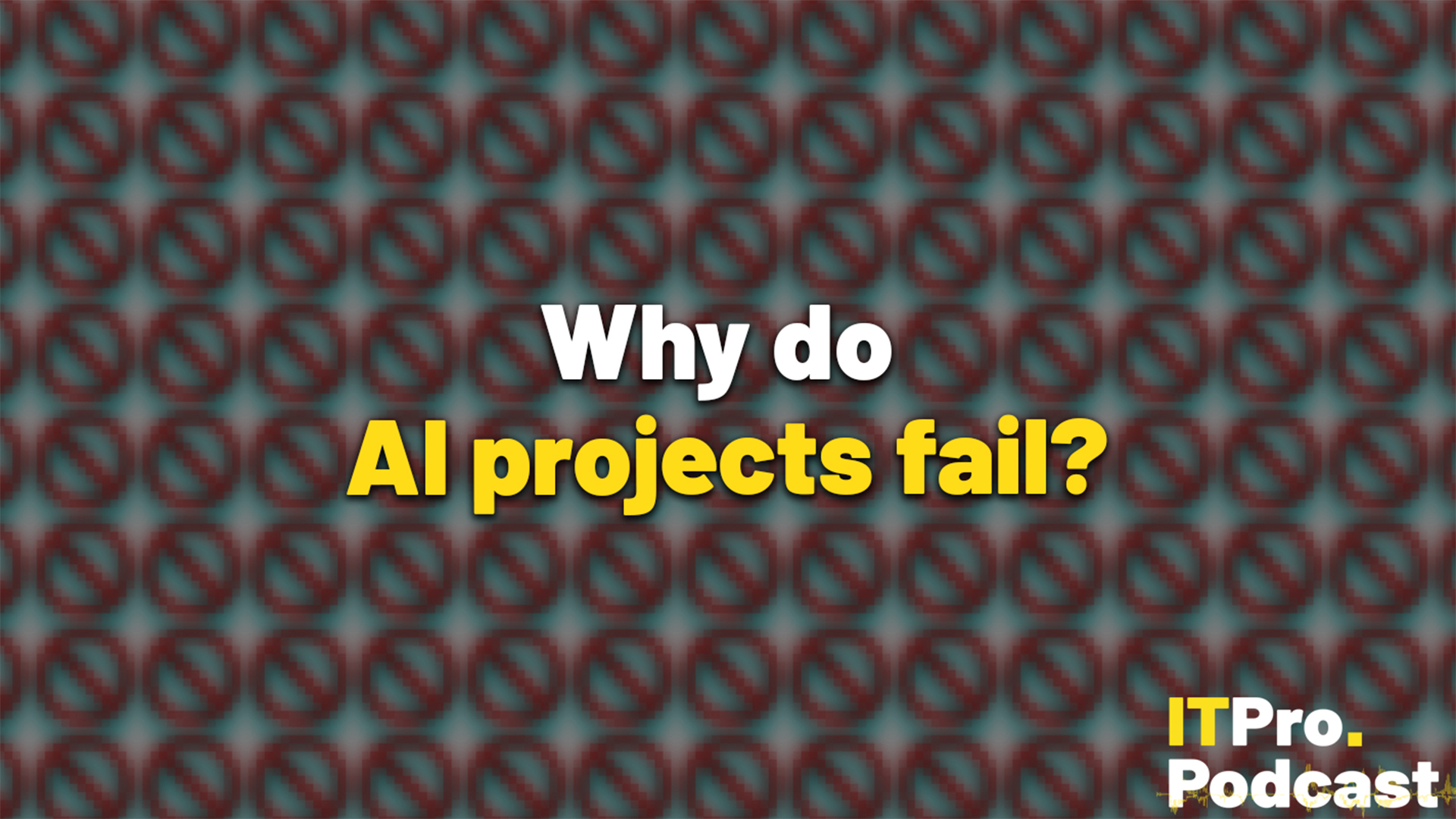 Why do AI projects fail?
Why do AI projects fail?ITPro Podcast Without a careful approach at the design phase, AI tools will fall apart in runtime
-
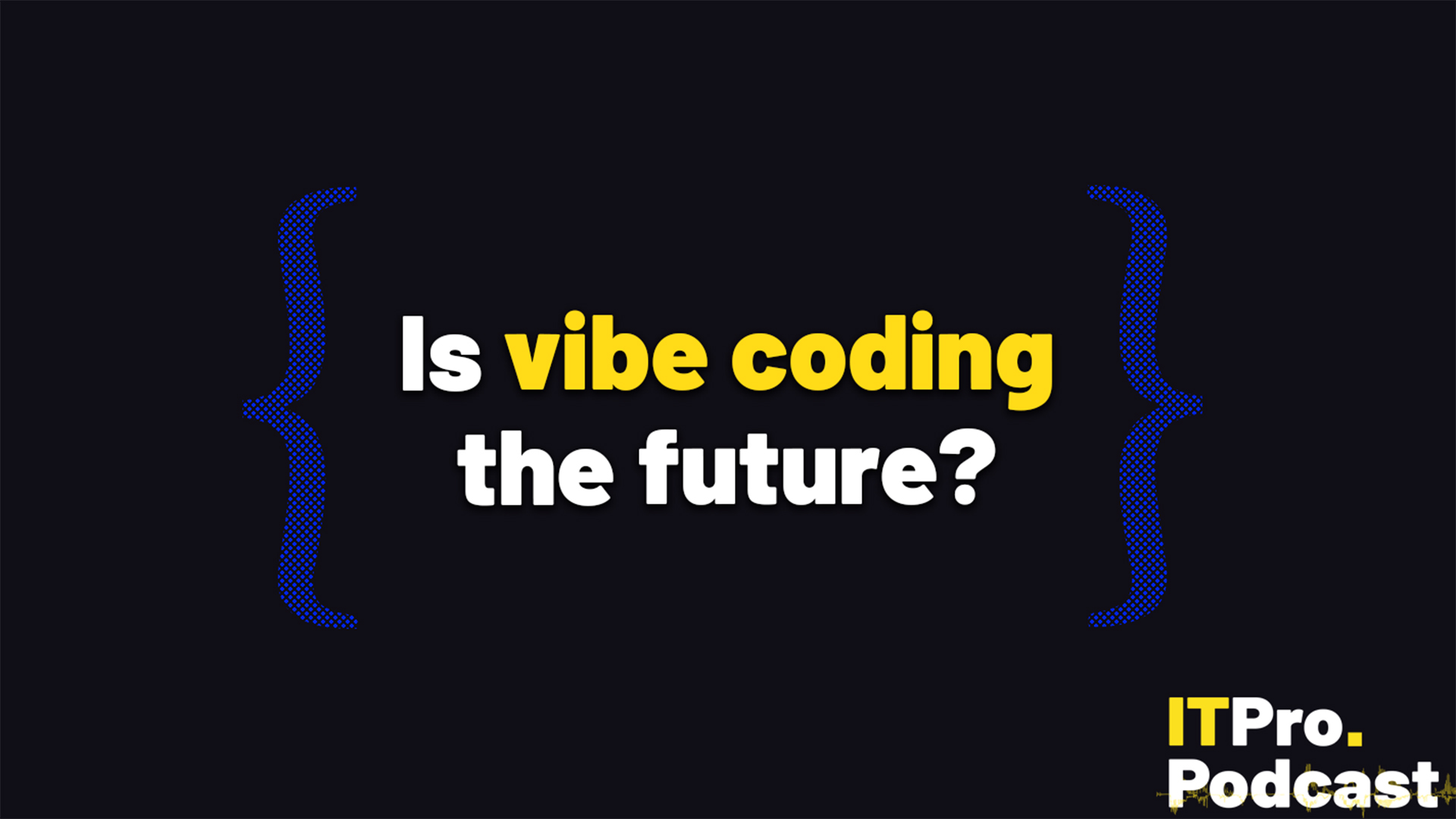 Is vibe coding the future?
Is vibe coding the future?ITPro Podcast As developers use AI to speed up code generation, leaders must work to ensure the technology complements existing practices
-
 September rundown: The UK becomes an AI playground
September rundown: The UK becomes an AI playgroundITPro Podcast Big tech has announced tens of billions in infrastructure investments for the UK – how will it help?
-
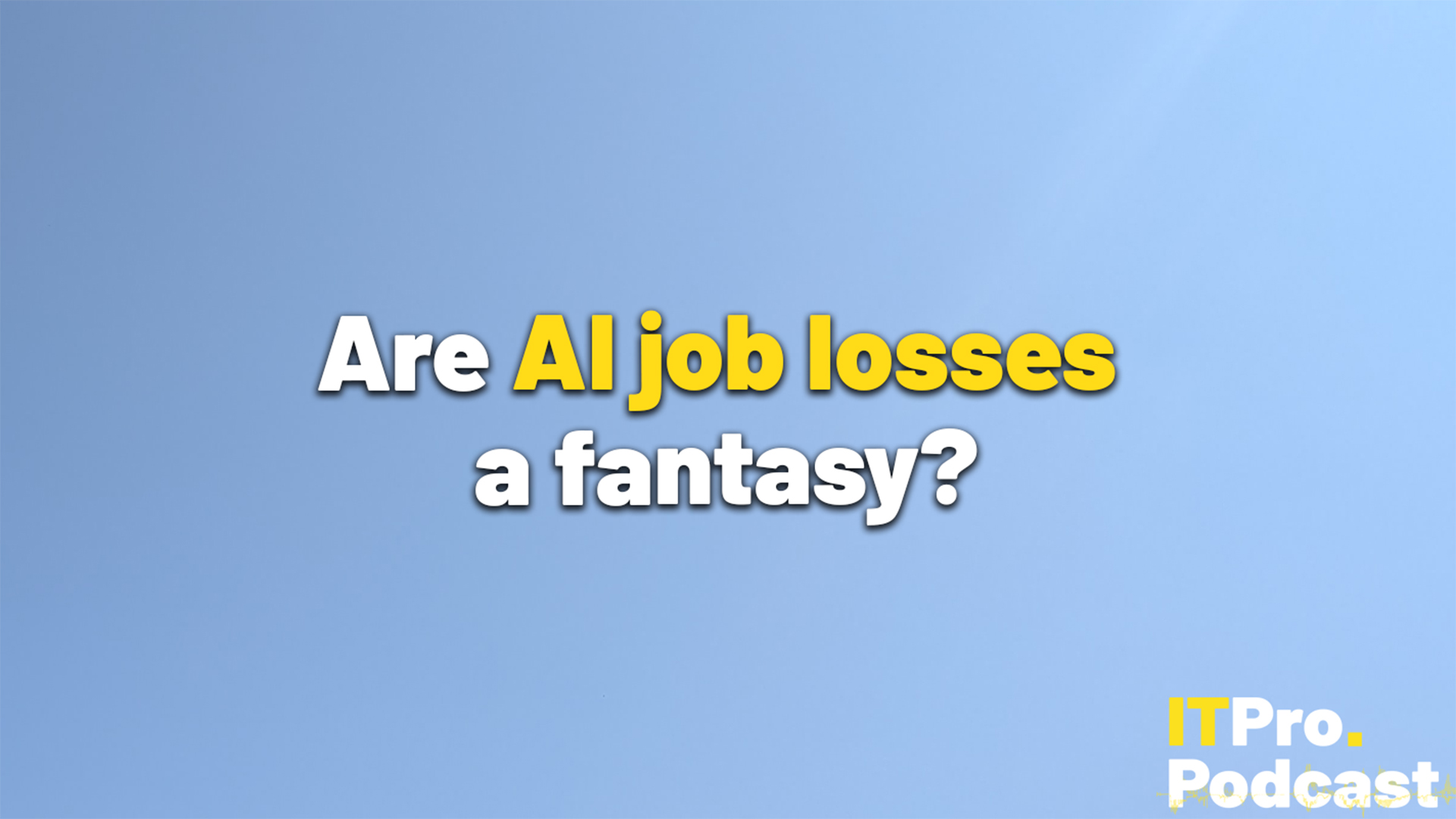 August rundown: Are AI job losses a fantasy?
August rundown: Are AI job losses a fantasy?ITPro Podcast AWS CEO Matt Garman's comments were made as big tech continues to lay off workers – but AI may not be the cause
-
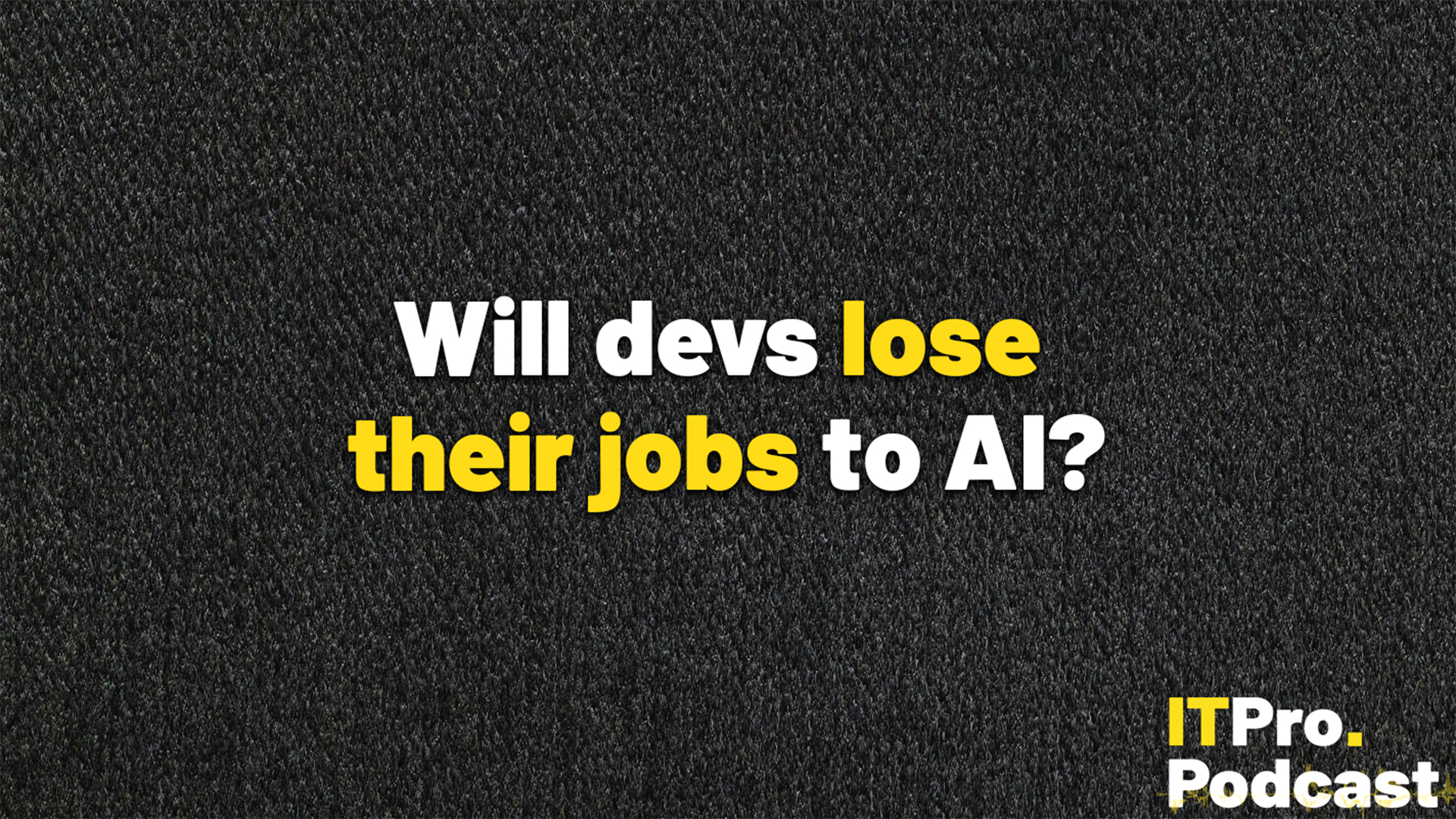 Will devs lose their jobs to AI?
Will devs lose their jobs to AI?ITPro Podcast Major errors in AI code generation throw doubt on the timeline to replacing human workers
-
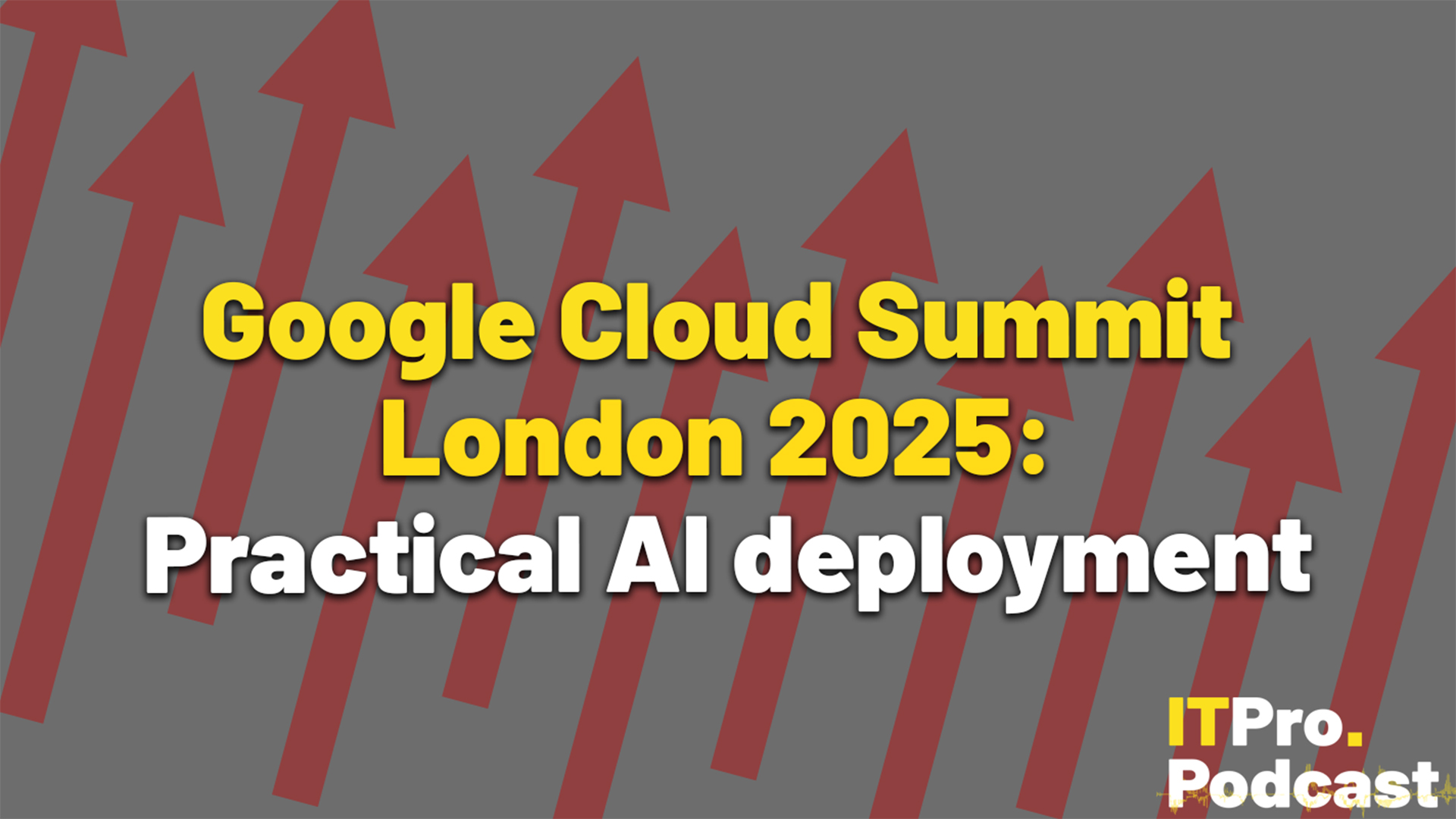 Google Cloud Summit London 2025: Practical AI deployment
Google Cloud Summit London 2025: Practical AI deploymentITPro Podcast As startups take hold of technologies such as AI agents, where is the sector headed?
-
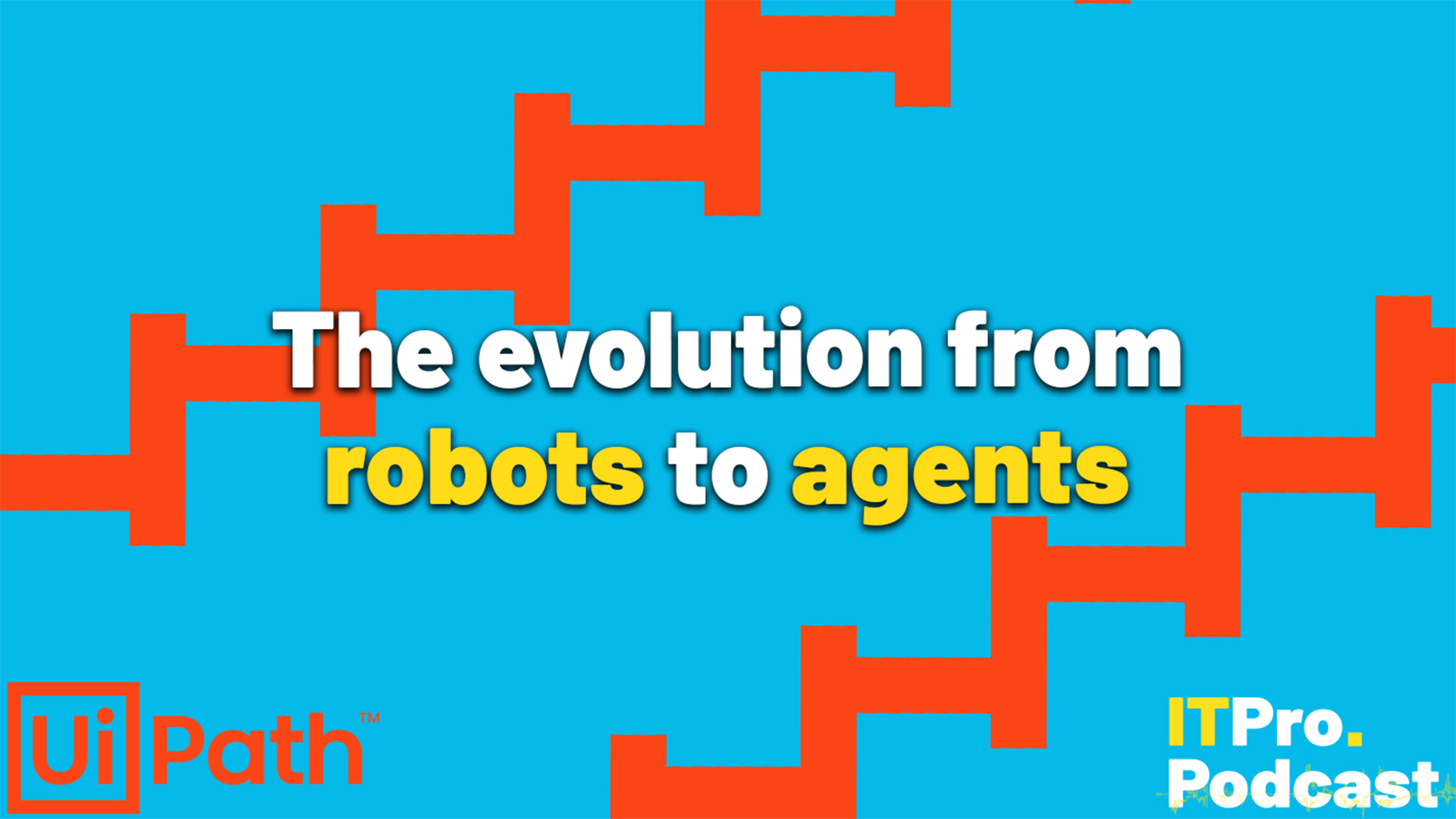 The evolution from robots to agents
The evolution from robots to agentsSponsored Podcast With the right adoption strategy, agentic AI can be a force multiplier for productivity
-
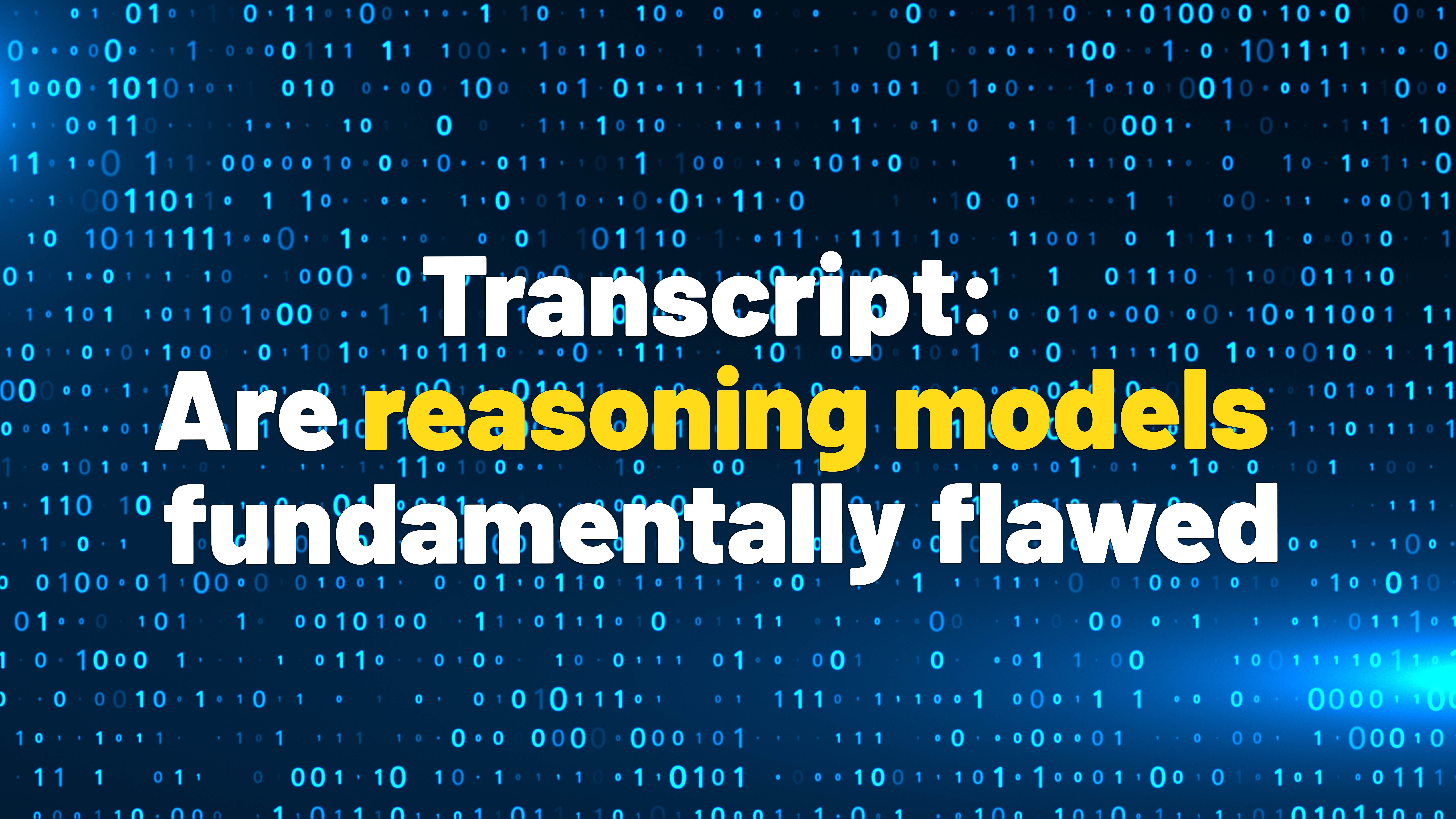 Podcast Transcript: Are reasoning models fundamentally flawed?
Podcast Transcript: Are reasoning models fundamentally flawed?ITPro Podcast A report from Apple has cast significant doubts on the efficacy of reasoning models, going as far as to suggest that when a problem is too complex, they simply give up